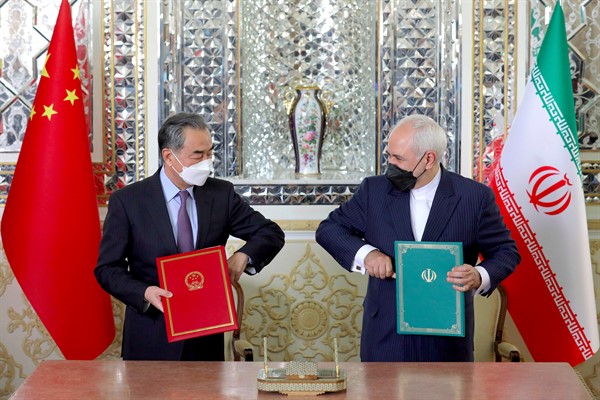The recently finalized 25-year comprehensive cooperation agreement between Iran and China has been referred to in the media as a “game-changer,” a “breakthrough” and a “major geopolitical shift,” but in reality, it is much ado about nothing. Signed with great fanfare on March 27, during Chinese Foreign Minister Wang Yi’s visit to Tehran, the deal does provide Iran with a political and rhetorical win in the context of its ongoing negotiations over the revival of the 2015 nuclear deal. Beyond the optics of the agreement with China, though, the substance follows the same playbook that Beijing and Tehran have developed over decades of bilateral relations: agreeing to deepen ties but on vague terms that are scant on details and concrete commitments.
The deal itself has not been made public, and Iranian Foreign Minister Javad Zarif took pains to highlight that the agreement with China was not a treaty, removing the requirement for parliamentary approval. He also denied that it outlined any specific figures—despite reports of $400 billion in promised Chinese investments—or obligations for either side.
Leaders of the two countries first publicly discussed their growing partnership when Chinese President Xi Jinping went to Iran in 2016. During the visit, Xi and his Iranian counterpart, Hassan Rouhani, pledged to expand their bilateral ties and to boost two-way trade from $32 billion to $600 billion over the next 10 years—an ambitious goal. Xi agreed to increase Chinese investments in Iran’s energy, infrastructure and even nuclear sectors. The plan also covered greater defense and military cooperation, something Iran was starved for after a decade-long arms embargo. But notwithstanding these pledges, progress on building ties remained slow.

